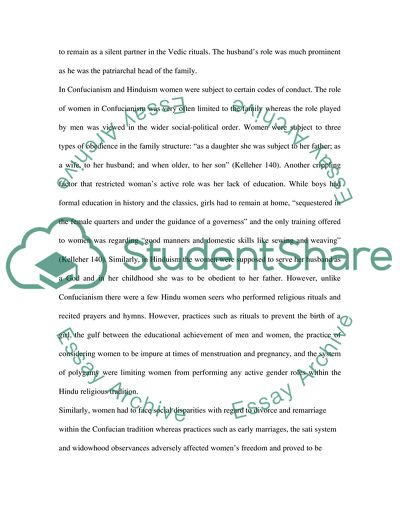Cite this document
(Gender issues in asian traditions Assignment Example | Topics and Well Written Essays - 1750 words, n.d.)
Gender issues in asian traditions Assignment Example | Topics and Well Written Essays - 1750 words. https://studentshare.org/gender-sexual-studies/1560358-gender-issues-in-asian-traditions
Gender issues in asian traditions Assignment Example | Topics and Well Written Essays - 1750 words. https://studentshare.org/gender-sexual-studies/1560358-gender-issues-in-asian-traditions
(Gender Issues in Asian Traditions Assignment Example | Topics and Well Written Essays - 1750 Words)
Gender Issues in Asian Traditions Assignment Example | Topics and Well Written Essays - 1750 Words. https://studentshare.org/gender-sexual-studies/1560358-gender-issues-in-asian-traditions.
Gender Issues in Asian Traditions Assignment Example | Topics and Well Written Essays - 1750 Words. https://studentshare.org/gender-sexual-studies/1560358-gender-issues-in-asian-traditions.
“Gender Issues in Asian Traditions Assignment Example | Topics and Well Written Essays - 1750 Words”. https://studentshare.org/gender-sexual-studies/1560358-gender-issues-in-asian-traditions.


